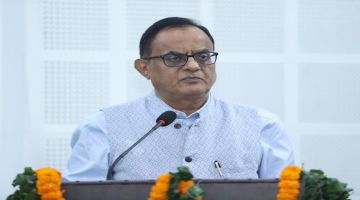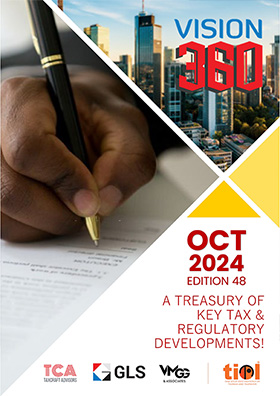FEBRUARY 17, 2014
By B N Gururaj, Advocate
IN Larsen & Toubro Ltd., vs. CST, Delhi, - (2013-TIOL-1458-CESTAT-DEL), the Division Bench of CESTAT has opined that when a conflict in the views of Members constituting a Division Bench is referred to a Third Member for opinion, the resultant decision based on the Third Member's opinion constitutes a Larger Bench decision. In this article, it is proposed to examine the correctness of this decision, as this view can lead to certain anomalous and unforeseen consequences.
If one were to examine the provisions of Chapter XV of the Customs Act, 1962 under which the CESTAT has been constituted, Central Excise (Appeal) Rules, 2001, or the Customs (Appeals) Rules, 1982 and the CESTAT (Procedure) Rules, 1982, it would be seen that there is no provision which confers power on the Tribunal or its President to constitute Larger Benches for resolving the conflicting judgments of the tribunal. However, in a rather old decision delivered by the Supreme Court in UOI vs. Paras Laminates Pvt. Ltd. (2002-TIOL-48-SC-CUS), the Supreme Court opined that President of the Tribunal has ample power to refer a case to a Larger Bench; that this is not in doubt in view of Section 129C(5) of the Customs Act, 1962; that the provisions clearly state that in the event of members of Bench differing in opinion, on any point, and the members are equally divided, the case shall be referred to the President for hearing on any such points by one or more members of the Tribunal, and such point shall be decided according to the opinion of the majority of the members. The reason for such broader interpretation of the powers of the Tribunal is found in paragraph 9 of the said judgment.
The rationale behind the broad interpretation of the powers of the Tribunal is unexceptionable. Because, the judicial function of the CESTAT must not come to a standstill for want of power to resolve the conflicting judgments. However, one would wish that instead of engaging judicial legislation, the Apex Court ought to have interpreted the provisions strictly and literally and left it to the wisdom of the Parliament to confer such powers on the Tribunal or its President. The Legislature would have provided unambiguous and clear framework for exercising the power to constitute Larger Bench, the powers and limitation of such Larger Benches. As it usually happens, judicial legislations done in this manner without adequate inputs would be open to frequent mis-interpretation, doubting and distinguishing, inasmuch as the Courts themselves have repeatedly held that a judgment cannot be read like a statute of law or Euclidean theorems.
After the delivery of this judgment, hundreds of Larger Benches have been constituted for resolving conflicting decisions. How efficacious these Larger Benches have been, cannot be the subject matter of this article as it would merit another independent, detailed analysis. But the fact remains that the Larger Benches are here to stay and the President of the Tribunal would continue to constitute them as and when he deems them necessary.
Returning to the judgment of the Hon'ble Tribunal in L&T case referred to in the opening paragraph, it would seem that this view can lead to quite unintended consequences. Firstly, it must be appreciated that hitherto the Larger Benches have been constituted when there are conflicting Division Bench decisions. Further, Larger Bench of five members have been constituted on certain occasions when it is found that the Larger Bench decisions themselves are in conflict with each other.
In contradistinction, the power available to the President of the Tribunal under Section 129C(5) is quite different. Here, the main purpose is to resolve the difference of opinion amongst the member constituting Division Bench, and not to resolve the conflict amongst the Division Bench decisions. Each member dis-agreeing in a Division Bench may have his own reason for differing, based either on the facts or on Law. Such difference of opinion is not necessarily based on conflicting judicial precedents. Based on the opinion of the Third Member, one of these views would become the decision of the original Division Bench. The final order is always pronounced by the original Division Bench itself as its own decision. Therefore, until the recent past, all the Benches of Hon'ble Tribunal as well as High Court and Supreme Court of India, had no occasion to consider such cases as Larger Bench decisions. Now, the L&T decision overturns the cart.
The Tribunal has relied on a decision of the High Court of Delhi in Puri (PC) vs. CIT, 1985 151 ITR 584 (Del.). In this case, the High Court of Delhi considered the scope of Section 259 of the Income Tax Act, 1961, which is pari materia with Section 129(5) of the Customs Act, 1962, except that section 259 applies to the Division Benches of the High Courts which hear tax appeals or tax references. The following observations of the Hon'ble High Court ignore the ground realities of Court practices and advocacy:
"There is no difference, really speaking, between the Full Bench of Three Judges sitting together and this method of referring to the Third Judge in the case of difference of opinion between the Two Judges. Whether the first is adopted or the second, "opinion of the majority" will be decisive. In this case, there is formal reference to third judge to ascertain his opinion. He turns the scales.The third judge is the full Bench. Not alone.But along with two others who first heard the case. Whether the three judges sit at the same time or at different times - two at one time, and the third hearing the matter later on a differences of opinion does not make much difference".
With great respect, it is submitted that the view of the High Court is not correct. When three judges or the members sit together and hear the matter in the open Court, when the counsels for both the sides present their arguments, there will be lively and scintillating interaction between the Bar and the Bench. There will be, so to speak "thinking on the feet" by all the persons involved in the hearing leading to exhaustive and threadbare consideration of the disputed issue. The resultant decision is bound to be comprehensive, inasmuch as it is an adage that a judgment is as good as the arguments canvassed before the Court. On the other hand, when a Third Member or the Judge hears the matter, he sits singly. He understands the case mainly based upon the records, not based upon the arguments. Even though the Counsels arguing before the Third Member have to re-state the case and also the causes for differences of opinion to the Third Member or the Judge, he leans in favour of one opinion or the other without having the benefit of conferring with the brother-judges or the members. Consequently, the resultant view which emerges after the decision of third member is a foregone conclusion. It cannot traverse beyond the question referred to for opinion. The third member or the judge cannot comprehensively re-examine the whole gamut of facts and Law. Whereas, this is permissible in a Larger Bench, properly so-called. It is submitted that this distinction between Three Members or Judges hearing the matter in the open Court and the third one sitting singly and hearing, has not been appreciated either by the Hon'ble High Court, or by the Division Bench which decided the L&T case.
The consequence of the view taken in L&T case is that now suddenly several hundred or perhaps thousands of judgments based upon third Member reference will be elevated to the status of Larger Bench. In the thirty years history of the CESTAT, none would have looked at these judgments as binding Larger Bench decisions. Now, out of blue, such decisions become binding on other Division Benches. Secondly, if some of these third member references are also the subject matter of subsequent Larger Bench decision, there is every likelihood that there will be divergent view amongst the Larger Benches decisions and the decisions based upon third member reference. These proper Larger Benches would not have considered the third member reference cases as Larger Bench decisions binding on them. Thus, for foreseeable future the Counsels and the ARs who argue before the Tribunal would be hard put to decide the efficacy of the Larger Bench decisions to be relied on. One is bound to find more and more conflicting decisions which require reference to large Benches of five Members. The result will only add to the delay in the disposal of cases and will not aid healthy growth of Law in any manner.
| (DISCLAIMER : The views expressed are strictly of the author and Taxindiaonline.com doesn't necessarily subscribe to the same. Taxindiaonline.com Pvt. Ltd. is not responsible or liable for any loss or damage caused to anyone due to any interpretation, error, omission in the articles being hosted on the site. ) |
|









 Download PDF
Download PDF




